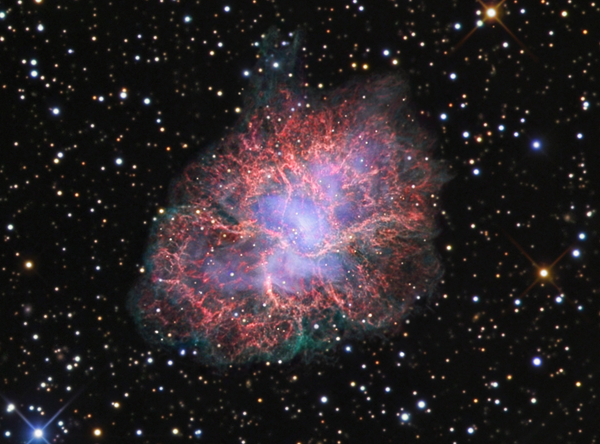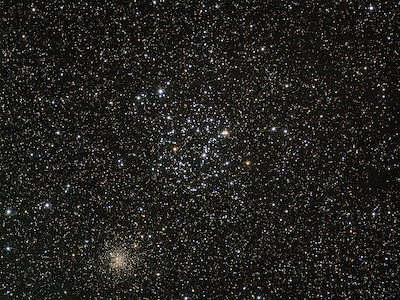I closed last month’s column, which discussed some off-the-beaten-path targets in Taurus, with the promise that we would return to the Bull this month in search for the corpse of a star that died millennia ago.
That stellar corpse is none other than the famous Crab Nebula (M1), one of the most fascinating objects found anywhere in the heavens. When he first happened upon it August 28, 1758, Charles Messier mistook it for a comet. This singularly important observation ultimately led to his now-famous list of deep-sky objects. But Messier was not the first person to lay eyes on the Crab. That moment went to London physician John Bevis, who had discovered it 27 years earlier.
The Crab’s impact on our view of the universe began long before that, however. On July 4, 1054, Chinese astronomers studying the early predawn sky suddenly noticed a brilliant star where no star previously existed. It outshone the planet Venus, and even though the Sun was nearby at the time, it was visible in broad daylight for more than three weeks. Halfway around the globe, drawings attributed to Anasazi and Mimbre Native American artists also captured its appearance. Strangely, there are no records that anyone in Europe, just emerging from the Early Middle Ages, took notice of the event.
I can still remember the cold January night back in high school when I first spotted the Crab through my original 7×35 binoculars. At the time, I considered it to be a reasonably easy catch using my 8-inch reflector, but impossible through binoculars that small. One evening, I was out in my backyard, literally lying in a snowbank. As I scanned back and forth through those binoculars, I decided to see just how many Messier objects I could find. It seemed appropriate to start at the beginning, so I aimed toward M1. Sure enough, it was there! It wasn’t obvious, but I could definitely make out a tiny smudge right where I knew the Crab lurked.
I bet that you can do it, too, if you wait for an exceptionally clear night. Aim your binoculars toward the star Zeta (ζ) Tauri, marking the Bull’s eastern horn. Now look for two fainter stars just to Zeta’s north that together form a tiny triangle. Finally, without moving your aim, shift your eyes from those two dim suns about ½° to the west. That’s where M1 lives. Please drop me a line through my website if you see it.
One of my favorite winter open clusters is little more than a binocular field to the east-northeast of Zeta Tauri, across the border in Gemini. M35 is much brighter and easier to find than the Crab. Look for it near the stars that form the foot of the twin Castor. Trace his body down from his namesake star toward his ankle and foot, which are marked by an arc of three stars, Mu (μ), Eta (η), and 1 Geminorum. M35 lies to the northwest of Eta. Its position near Castor’s big toe leads me to think of this as the “Soccer Ball Cluster,“ as it looks like Castor is about to kick it right between the horns of Taurus
Just southwest of M35 is the very rich and very distant open cluster NGC 2158. Studies show that M35 is 2,800 light-years away, but NGC 2158 is nearly 16,000 light-years distant.
NGC 2158 is usually listed as between magnitudes 8.5 and 9 in observing handbooks, but I have always felt this is a bit optimistic. I can see it through my 10×50 binoculars if steadily supported, but only on the best nights.
There’s a third open cluster in the same binocular field as M35, although few pay it much attention. Lying about midway between M35 and Mu Geminorum, Collinder 89 is a sparsely settled collection of about 15 suns. Only four, however, are apparent through binoculars: 9, 10, 11, and 12 Geminorum. This slender diamond of stars helps define the span of this obscure open cluster.












